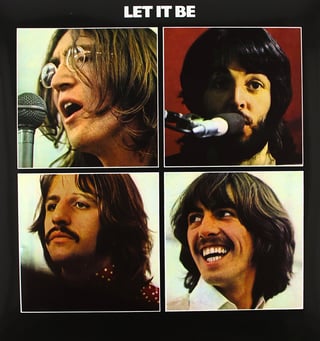7 Beatles Secrets about Songwriting I wish I'd Discovered Decades Sooner (Part 2)
by Jessica Brandon
The song writing styles of John Lennon and Paul McCartney not only differ from each other fundamentally, but also change over time, affected and influenced by each other. The songwriting partnership between Lennon and McCartney is extremely legendary. They employed so many tricks that anyone can add to their songwriting arsenal. Here are some secrets and tricks of the Beatles:
1. Change up your chorus
This shows up in their hit "She Loves You". Unusually, the song starts with the hook right away, instead of introducing it after a verse or two. "She Loves You" does not include a bridge, instead using the refrain to join the various verses. The chords tend to change every two measures, and the harmonic scheme is mostly static.
2. All Blues to Your Melody
When recording “Back in the U.S.S.R.”, On Track 3, McCartney played bass while Harrison played the Bass VI, sometimes doubling McCartney's bass line and sometimes playing full chords. (This capability was one of the benefits of the Bass VI; it could be played as a bass or as a regular 6-string guitar.)
3. Mode mixture & Delay The Root Chord
"Eleanor Rigby" is played mainly in staccato chords with melodic embellishments.
The song is a prominent example of mode mixture, specifically between the Aeolian mode, also known as natural minor, and the Dorian mode. Set in E minor, the song is based on the chord progression Em-C, typical of the Aeolian mode and utilising notes ♭3, ♭6, and ♭7 in this scale. The verse melody is written in Dorian mode, a minor scale with the natural sixth degree. "Eleanor Rigby" opens with a C-major vocal harmony ("Aah, look at all ..."), before shifting to E-minor (on "lonely people"). The Aeolian C-natural note returns later in the verse on the word "dre-eam" (C-B) as the C chord resolves to the tonic Em, giving an urgency to the melody's mood.
The Dorian mode appears with the C# note (6 in the Em scale) at the beginning of the phrase "in the church". The chorus beginning "All the lonely people" involves the viola in a chromatic descent to the 5th; from 7 (D natural on "All the lonely peo-") to 6 (C♯ on "-ple") to ♭6 (C on "they) to 5 (B on "from"). This is said to "add an air of inevitability to the flow of the music (and perhaps to the plight of the characters in the song)".
4. Use non-diatonic chords and secondary dominants & Utilise The Outside Chord
"Strawberry Fields Forever" was originally written on acoustic guitar in the key of C major. The recorded version is approximately in B♭ major; owing to manipulation of the recording speed, the finished version is not in standard pitch (some, for instance, consider that the tonic is A). The introduction is played on a Mellotron, and involves a I–ii–I–♭VII–IV progression. The vocals enter with the chorus instead of a verse. In fact we are not "taken down" to the tonic key, but to "non-diatonic chords and secondary dominants" combining with "chromatic melodic tension intensified through outrageous harmonization and root movement".
“I Want To Hold Your Hand’ ‘I Saw Her Standing There’ Voice leading in the Plagal cadence Here is a summary of the action in a IV–I change (in the key of C), highlighting the important ‘inner’ voice leading.”
5. Restate Your Lyrics
Lennon's lyrics "A Day in the Life" were inspired by contemporary newspaper articles, including a report on the death of Guinness heir Tara Browne. John Lennon wrote the melody and most of the lyrics to the verses of "A Day in the Life" in mid January 1967. Soon afterwards, he presented the song to Paul McCartney, who contributed a middle-eight section.
6. Take Risks
Example: Here There and Everywhere(1966)
In many ways, the opposite of Eleanor Rigby in that it is rich and complex harmonically speaking. The first time Paul really spreads his compositional wings and takes bigger risks with ascending major chord sequence.
The introduction beginning "To lead a better life" opens in the key of G and involves a I–iii–♭III–ii–V7 chord progression. The ♭III (B♭ chord) on "I need my love to be here" (arpeggiated in the melody line) is a dissonant substitute for the more predictable VI (E7) that would normally lead to the ii (Am) chord.
7. Change of Keys from Minor to Major
The song as originally issued by the Beatles is in the key of A minor, changing to A major over the bridges. Aside from the intro, the composition is structured into two rounds of verse and bridge, with an instrumental passage extending the second of these verse sections, followed by a final verse and a long instrumental passage that fades out on the released recording. All the sections consist of an even sixteen bars or measures, which are divided into four phrases.
The chord progression over the verses includes a shift to a ♭7 (Am/G) on "all" (bass note G) and a 6 (D9 (major 3rd F♯)) after "love" (bass note F♯) to a ♭6 (Fmaj7) on "sleeping" (bass note F). According to musicologist Dominic Pedler, the 8–♭7–6–♭6 progression represents a hybrid of the Aeolian and Dorian modes. The change to the parallel major key is heralded by a C chord as the verse's penultimate chord (replacing the D used in the second phrase of each verse) before the E that leads into the bridge. Musicologist Alan Pollack views this combination of C and E as representing a sense of "arrival", after which the bridge contains "upward [harmonic] gestures" that contrast with the bass descents that dominate the verse. Such contrasts are limited by the inclusion of minor triads (III, VI and II) played over the E chord that ends the bridge's second and fourth phrases.
Information on the 23rd Annual USA Songwriting Competition, go to: http://www.songwriting.net/enter


